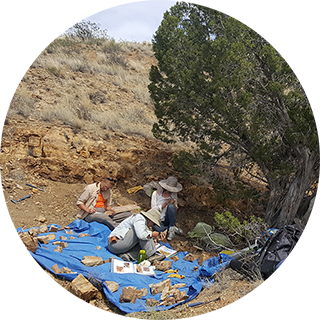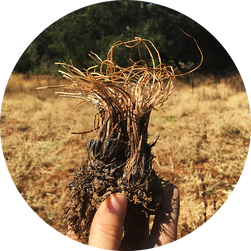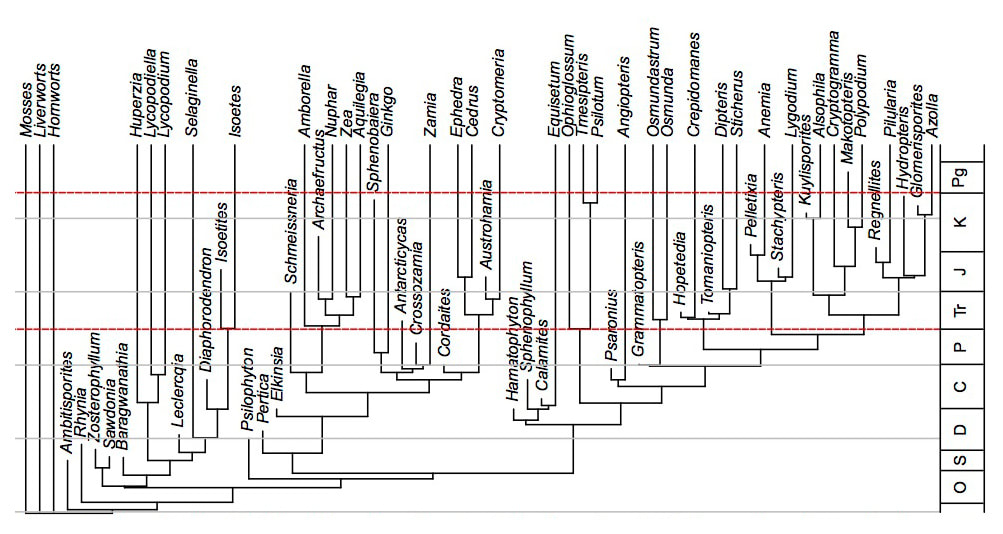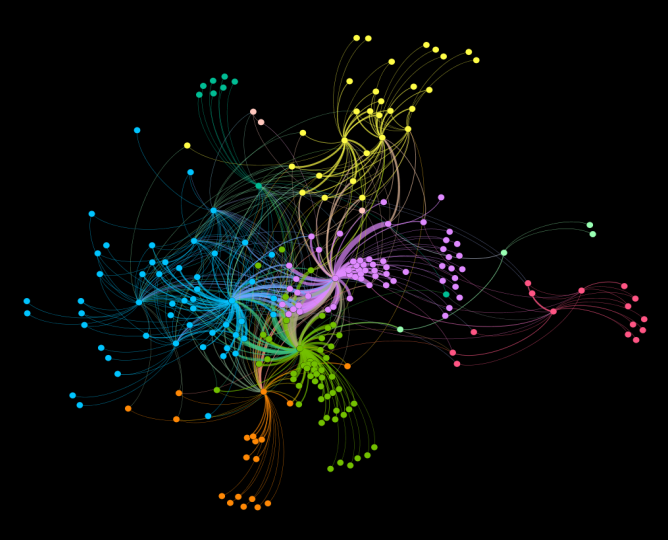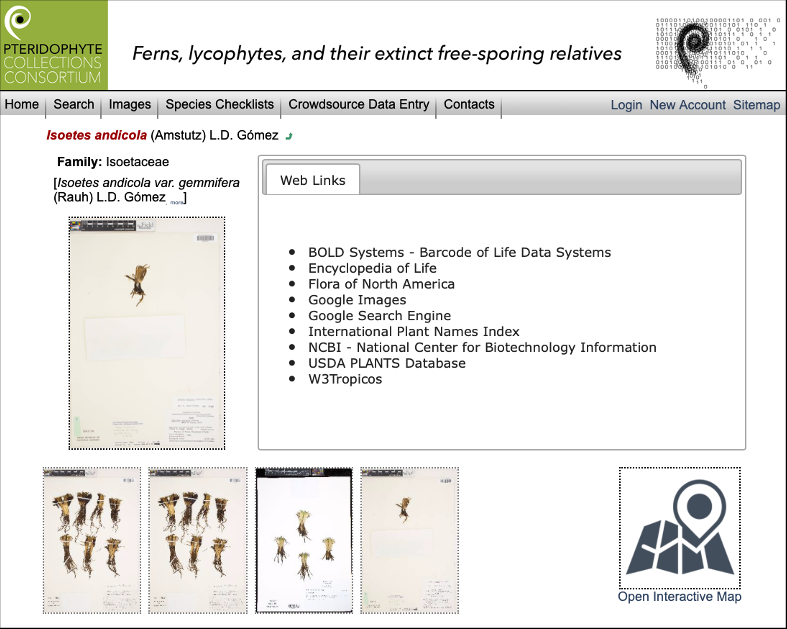Projects
A unique 75-million-yr-old window into the ecology of Cretaceous forests during the rise of flowering plants
UCB team: Dori Contreras (now with the Perot Museum of Nature and Science, TX), Jaemin Lee & Cindy Looy
Collaborators: Gary Upchurch (Texas State U); Elizabeth Wheeler (North Carolina State U); Emilio Estrada-Ruiz (Instituto Politécnico Nacional, Mexico); James Doyle (UC Davis) & Selena Smith (U of Michigan)
Undergraduate student researchers: Grant Nguyen, Kelly Morgan, Reine Ngnonsse & Sam Bi
Sponsored by the National Science Foundation
UCB team: Dori Contreras (now with the Perot Museum of Nature and Science, TX), Jaemin Lee & Cindy Looy
Collaborators: Gary Upchurch (Texas State U); Elizabeth Wheeler (North Carolina State U); Emilio Estrada-Ruiz (Instituto Politécnico Nacional, Mexico); James Doyle (UC Davis) & Selena Smith (U of Michigan)
Undergraduate student researchers: Grant Nguyen, Kelly Morgan, Reine Ngnonsse & Sam Bi
Sponsored by the National Science Foundation
|
|
Tropical forests are important hotspots of biodiversity, harboring unparalleled numbers of plant and animal species. The high diversity of modern tropical forests is due to the dominance of flowering plants, which first appeared ~140 million years ago (mya) during the age of dinosaurs. Flowering plants rapidly diversified and spread around the globe during the remainder of the Cretaceous (140-66 mya), and evolved a variety of life forms that added to the ecological complexity of forests.
This project investigates a crucial interval of the vegetational transition, ~75 million years ago. The late Cretaceous (100.5-66 million years ago) was a critical transition in Earth history, and the dawn of modern forests as we know them, yet the timing and sequence of many key events remains unanswered. We use extensive paleontological field studies, fossil collections, and new quantitative techniques to generate comprehensive reconstructions of this late Campanian forest from fossilized leaves, wood, and reproductive materials (including seeds, fruits, cones, and flowers). The fossil flora is from the Jose Creek Member of the McRae Formation in south-central New Mexico, which was located >200 km inland of the Western Interior Seaway — an inland sea that covered large parts of central North America. These plant assemblages provide an unprecedented opportunity because — unlike most similarly-aged fossil floras — they are from interior, rather than coastal or swampy environments, and represent tropical, rather than cooler climatic conditions. The plant remains are encased in a layer of volcanic ash. As the ash fell, it 'collected' and entombed plant bits from the top of the canopy down to the understory, and as such sampled and preserved multiple plant organs in close association from throughout the vertically tiered forest structure. An outcrop of the fossiliferous ash deposit can be traced for 1.2 km through the New Mexican landscape and thus represents a linear transect through the former forest ecosystem — documenting the geographic patchiness of its structure at a sub-ecosystem scale. Reconstruction of the flora from leaf macrofossils has provided the first quantitative evidence that ecological dominance of flowering plants was established by the late Campanian in warmer climates, and that this flora is the most speciose single-deposit Cretaceous flora known to date. By using newly developed sampling and analytical techniques, these studies will generate high-resolution reconstructions of the diversity and ecological structure of the paleoforest. In addition, the project will provide important insights into forest evolution in tropical climates, the timing and patterns of ecological expansion of flowering plants, the habitats of dinosaurs and early mammals, and the history of vegetation for the Western-Interior of North America. |
Currently, graduate student Jaemin Lee is working on the ecology of seeds and fruits, description of flowers and inflorescences/infructescences, and quantitative study of leaf herbivory by arthropods, with undergraduate research assistants Sam Bi and Kelly Morgan. The diaspore sizes (plant dispersal unit) show a significant departure from other Cretaceous floras in previous studies, suggesting that the flowering plants in this late Campanian flora had more diverse diaspore morphologies and associated dispersal strategies. The insect damage analysis will provide insight into plant-insect interactions during this crucial period of taxonomic turnover, and will clarify important aspects of the fossil forest ecosystem structure by adding herbivorous insects and pollinators into the picture. Moreover, some specialized leaf damage types (e.g., galls and mines) are taxonomically identifiable, and will thus provide indirect evidence of the abundance of some specific insect taxa — even in the absence of body fossils of those taxa.
Publications: Contreras DL, 2018. A workflow and protocol describing the field to digitization process for new project-based fossil leaf collections. Applications in Plant Sciences6(2): e1025. https://doi.org/10.1002/aps3.1025
Publications: Contreras DL, 2018. A workflow and protocol describing the field to digitization process for new project-based fossil leaf collections. Applications in Plant Sciences6(2): e1025. https://doi.org/10.1002/aps3.1025
Testing UV-B radiation as a proposed driver behind the end-Permian biotic crisis
UCB team: Jeff Benca (now with the Burke Museum of Natural History and Culture, WA), Sunita Bohara, Cindy Looy & Ivo Duijnstee
Collaborators: Henrik Svensen & Sverre Planke (U of Oslo, Norway); Alexander Polozov (Russian Academy of Sciences); Barry Lomax & Matthew Kent (U of Nottingham, UK); Surangi Punyasena (U of Illinois, Champaign-Urbana)
Sponsored by the National Science Foundation
UCB team: Jeff Benca (now with the Burke Museum of Natural History and Culture, WA), Sunita Bohara, Cindy Looy & Ivo Duijnstee
Collaborators: Henrik Svensen & Sverre Planke (U of Oslo, Norway); Alexander Polozov (Russian Academy of Sciences); Barry Lomax & Matthew Kent (U of Nottingham, UK); Surangi Punyasena (U of Illinois, Champaign-Urbana)
Sponsored by the National Science Foundation
|
The ozone layer plays a vital role in intercepting harmful solar ultraviolet-B radiation (UV-B) from reaching Earth’s surface. However, its effectiveness in doing so has fluctuated in the past and little is known of the impacts of a thinning ozone layer on vegetation.
Anticipating potential consequences in the future depends on understanding time intervals with heightened UV stress in the past. The largest mass extinction in history at the end of the Permian Period (~252 million years ago) and associated biotic crises may have encompassed such time intervals. Plant fossil records from these crises show two odd features worldwide. Many pollen grains produced by vanishing woodland seed plants were malformed, and proliferating herbaceous plants (lycopsids) spread their spores frequently as unseparated clusters of four. Heightened UV exposure is hypothesized to have caused these abnormalities. Compounds produced by the largest volcanic province in history, the Siberian Traps, likely caused prolonged or frequent deterioration of the ozone shield. We are testing if high UV-B radiation levels could indeed explain the abnormalities and extinction patterns in plants observed during the end-Permian biotic crisis using growth chamber and germination experiments and compare these with end-Permian fossil pollen and spore assemblages from sediments within the Siberian Traps. Publications: Benca JP, Duijnstee IAP, CV Looy, 2018. UV-B-induced malformed pollen implicates ozone shield failure in Earth's largest mass extinction. Science Advances 4: e1700618 doi.org/10.1126/sciadv.1700618 (pdf file here) Benca JP, Duijnstee IAP and Looy CV, 2022. Pollen malformations as indicators of past environmental stress: Comparing background variation with heightened UV-B exposure in modern conifers. Paleobiology. 34 pp. doi.org/10.1017/pab.2022.3 |
|
Using fossils to better understand periods of global warming in Earth's past
UCB team: Jenn Wagner & Cindy Looy
Collaborators: Lenny Kouwenberg (Utrecht, The Netherlands), Lauren Michel (Tennessee Tech) & Joe Milligan (Baylor University, TX)
Undergraduate student researchers: Riya Tandon plus former students Josie Christon, Isha Mahajan, Tanmayi Patharkar
UCB team: Jenn Wagner & Cindy Looy
Collaborators: Lenny Kouwenberg (Utrecht, The Netherlands), Lauren Michel (Tennessee Tech) & Joe Milligan (Baylor University, TX)
Undergraduate student researchers: Riya Tandon plus former students Josie Christon, Isha Mahajan, Tanmayi Patharkar
The foundation of terrestrial life: inferring a total-evidence timeline of vascular plant evolution
UCB team: Mike May, Dori Contreras (now Perot Museum of Nature and Science), Ben Muddiman, Cindy Looy & Carl Rothfels
Collaborators: Nathalie Nagalingum (Cal Academy of Sci), Michael Sundue (Pringle Herbarium, VT) & Ryan Thummel (Vancouver, BC)
Undergraduate student researcher: Lan Wei
Sponsored by the National Science Foundation
UCB team: Mike May, Dori Contreras (now Perot Museum of Nature and Science), Ben Muddiman, Cindy Looy & Carl Rothfels
Collaborators: Nathalie Nagalingum (Cal Academy of Sci), Michael Sundue (Pringle Herbarium, VT) & Ryan Thummel (Vancouver, BC)
Undergraduate student researcher: Lan Wei
Sponsored by the National Science Foundation
Tuning the pollen and spore records of Permian Gondwana: deciphering the history of terrestrial ecosystem response during the late Paleozoic deglaciation
UCB team: Riley Hayes & Cindy Looy
UCB team: Riley Hayes & Cindy Looy
Only once before today have icecaps and complex terrestrial ecosystems coexisted on Earth: the Late Paleozoic Ice Age (ca. 340-280 million years ago). While the ocean-covered north pole lacked land ice, one or multiple icecaps covered large parts of Gondwana, a southern-hemisphere landmass comprised of South America, Africa, Australia, Antarctica, and India. Plant fossils—especially pollen and spores—record plant migrations and changes in ecosystems worldwide following the gradual decline of the ice masses. Just as today, available evidence implicates CO2-forcing as the cause of this planetary-scale deglaciation.
Pollen and spore fossils from the Permian of Gondwana constitute the only high-resolution prior record of high-latitude plant communities during an icehouse-to-greenhouse transition. However, the difficulty of precisely correlating these fossil records to the international geologic time scale obscures the tempo of floral change during this interval. No quantitative model capable of detecting rapid vegetation fluctuations contemporaneous with the Gondwanan deglaciation presently exists.
We aim to develop tools suitable for the task: high-precision timescales of the Permian of Australia, derived from the rich record of fossil pollen and spores preserved in sedimentary basins across the continent. The timescale is derived via constrained optimization algorithms, implemented in the software CONOP9. These algorithms first draw upon pollen and spore records to assemble a scaled composite sequence of fossil first and last appearance datums. Next, high-precision zircon dates (U-Pb CA-TIMS) directly associated with those fossil records calibrate the timescales, yielding high-resolution records of vegetation change.
Preliminary work shows that the model uniquely illustrates trends in the diversity and biogeography of high-latitude vegetation during an unparalleled historical precedent to the ongoing human-induced icehouse-to-greenhouse transition.
Pollen and spore fossils from the Permian of Gondwana constitute the only high-resolution prior record of high-latitude plant communities during an icehouse-to-greenhouse transition. However, the difficulty of precisely correlating these fossil records to the international geologic time scale obscures the tempo of floral change during this interval. No quantitative model capable of detecting rapid vegetation fluctuations contemporaneous with the Gondwanan deglaciation presently exists.
We aim to develop tools suitable for the task: high-precision timescales of the Permian of Australia, derived from the rich record of fossil pollen and spores preserved in sedimentary basins across the continent. The timescale is derived via constrained optimization algorithms, implemented in the software CONOP9. These algorithms first draw upon pollen and spore records to assemble a scaled composite sequence of fossil first and last appearance datums. Next, high-precision zircon dates (U-Pb CA-TIMS) directly associated with those fossil records calibrate the timescales, yielding high-resolution records of vegetation change.
Preliminary work shows that the model uniquely illustrates trends in the diversity and biogeography of high-latitude vegetation during an unparalleled historical precedent to the ongoing human-induced icehouse-to-greenhouse transition.
The Phillips Coal Ball Collection treasure trove: Reconstructing wildfire from a lost, hyperoxic world, preserved in the most detailed plant fossil collection ever
UCB team (lead institution): Ben Muddiman, Cindy Looy & Ivo Duijnstee
Collaborators: Scott Elrick & John Nelson (Illinois State Geological Survey), Bill DiMichele (National Museum of Natural History), Mike Donovan (Field Museum), Surangi Punyasena, Scott Lakeram & Max Christie (University of Illinois Urbana-Champaign)
Former undergraduate student researchers: Henry Thomas & Sydney Booth
Sponsored by a Chemical Society of America PRF Grant
UCB team (lead institution): Ben Muddiman, Cindy Looy & Ivo Duijnstee
Collaborators: Scott Elrick & John Nelson (Illinois State Geological Survey), Bill DiMichele (National Museum of Natural History), Mike Donovan (Field Museum), Surangi Punyasena, Scott Lakeram & Max Christie (University of Illinois Urbana-Champaign)
Former undergraduate student researchers: Henry Thomas & Sydney Booth
Sponsored by a Chemical Society of America PRF Grant

From left to right: (1) The late Tom L. Phillips, students and colleagues on a coal ball collection expedition in an open coal mine in Southern Illinois, 1968 (photo courtesy Dr. Hermann Pfefferkorn). (2) Five decades later, Tom Phillips and his former student Bill DiMichele—staring into a so-called discussion microscope to compare notes on the anatomically preserved plant tissues, embedded in a coal ball acetate peel. (3) Enumerating plant taxa, organs and tissues square cm by square cm (more than a mind-boggling 800,000 cm2 have thus been assessed by Phillips, his students and collaborators).
|
The Carboniferous (359-299 million years ago) is an exceptionally interesting period in Earth’s history. Geographically, ecologically, atmospherically, and climatically, the world was unlike anything we see today. What are now Europe and America were one landmass—Euramerica, in the equatorial region of the supercontinent Pangea, which contained all 7 current continents. Unlike today, Euramerica was largely a flat craton, a landscape with little topography. In the later parts of the Carboniferous, the craton was periodically dominated by widespread peat swamps. These swamps were often dominated by tall (>100 ft) spore-bearing lycopod trees, making for an alien looking, Dr. Seuss-like landscape.
Interestingly, the Carboniferous was also a period of cyclic, recurring episodes of climate change—quite similar to the glacial-interglacial alternations that our planet has experienced in the last few millions of years. In the Euramerican tropics this Late Paleozoic Ice Age resulted in an everwet climate during the glacial period and a seasonally dry climate during the interglacials. These glacial-interglacial cycles occurred over 30 times, making this a great period to study the impacts of climate change on ecosystems. Paleofire From an atmospheric perspective, oxygen levels were likely significantly higher than the Present Atmospheric Level of ~21%. This so-called hyperoxic atmosphere would have impacted the physiology of plants and animals (possibly contributing to the enormous size of some insects). We think that it also changed the prevalence of fire—the hyperoxia likely led to increased fire frequency and intensity. Experimental work shows that ignition probability, fire spread rate, and burn duration all increase with rising oxygen levels. How these changes in the physics of fire were manifested in the peat swamp ecosystems of the Late Carboniferous is largely still a mystery. Reconstructing the behavior and impact of fires on these ancient landscapes is no easy task. The biggest single treasure trove of exquisitely preserved plant fossils ever collected on our planet—the Tom Phillips Coal Ball Collection and database (for more on this, look here and here)—contains detailed information on not only the abundance of fossilized charcoal—our best evidence of paleofire—through space and time, but also information on which plant groups and which organs (leaves, roots, reproductive parts, etc.) burned. These data will allow us to link our understanding of the physical changes in fire under hyperoxic conditions with the ecosystem impacts that these fires had. Because this dataset covers millions of years of fossil material, we can also relate changes in fire frequency, behavior, and impact to the dramatic climatic shifts that happened repeatedly in the Carboniferous. Why should you care? Understanding the impacts of climate change on plant communities and on fire frequency, distribution, intensity, etc. is an important undertaking given current projections for Earth’s future climate. Especially now the west coast of North America seems to have entered a new era of annual megafires, this is of course of great interest. |
The Pteridological Collections Consortium: an integrative approach to pteridophyte diversity over the last 420 million years
UCB team (lead institution): Diane Erwin, Amy Kasameyer, Joyce Gross, Cindy Looy & Carl Rothfels
Collaborators: many PIs from 35 herbaria and museums in the USA
Sponsored by a National Science Foundation ADBC Grant
UCB team (lead institution): Diane Erwin, Amy Kasameyer, Joyce Gross, Cindy Looy & Carl Rothfels
Collaborators: many PIs from 35 herbaria and museums in the USA
Sponsored by a National Science Foundation ADBC Grant
|
Pteridophytes (ferns, lycophytes, and their extinct free-sporing relatives) are a diverse group of plants that today comprises approximately 12,000 species and plays a major role in terrestrial ecosystems. Pteridophytes were even more important in the past, especially before the evolution of the gymnosperms and the flowering plants. This group of land plants were the first plants to evolve roots and leaves, the first to colonize drier habitats, and the first to form forests.
Historically, the research communities interested in extant pteridophytes and those studying the fossil ones were largely separate from each other. The extant and fossil specimens were housed in different facilities (herbaria and paleontological museums, respectively) and their researchers often worked in different departments. The Pteridophyte Collections Consortium (PCC) was created to promote the integration of these communities by bringing together specimen data and associated resources for both living and fossil pteridophytes. The Pteridophyte Collections Consortium TCN is a three-year project funded through the National Science Foundation Advancing the Digitization of Biological Collections program (ADBC) to digitize and web-mobilize over 1.6 million extant and fossil pteridophytes from 36 herbaria and museums throughout the U.S. In the future, we hope to include collections from new PCC-affiliated institutions as that will join us as Partners to an Existing Network (PEN), and to collaborate with other institutions worldwide. One of our primary goals is to database and image these collections to make them web-accessible to researchers and the public alike. Data access is available through our PCC Symbiota portal, and data aggregator sites such as iDigBio, the Global Biodiversity Information Facility (GBIF), Encyclopedia of Life (EOL), Paleobiology Database (PBDB), iDigPaleo and others. These data are and will be used for research, education and public outreach, and provide for a long-term digital collection archive. |
